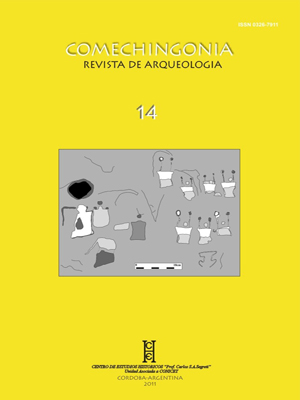Experiencia de la muerte y la representación de las personas en las prácticas funerarias del valle Calchaquí Norte
Main Article Content
Abstract
Downloads
Article Details
Copyleft
Este obra está bajo una licencia de Creative Commons Reconocimiento-CompartirIgual 4.0 Internacional.
Usted es libre para: Compartir — copiar y redistribuir el material en cualquier medio o formato
- Adaptar — remezclar, transformar y crear a partir del material
- Para cualquier propósito, incluso comercialmente
- El licenciante no puede revocar estas libertades en tanto usted siga los términos de la licencia
-
Atribución — Usted debe darle crédito a esta obra de manera adecuada, proporcionando un enlace a la licencia, e indicando si se han realizado cambios. Puede hacerlo en cualquier forma razonable, pero no de forma tal que sugiera que usted o su uso tienen el apoyo del licenciante.
-
CompartirIgual — Si usted mezcla, transforma o crea nuevo material a partir de esta obra, usted podrá distribuir su contribución siempre que utilice la misma licencia que la obra original.
- No hay restricciones adicionales — Usted no puede aplicar términos legales ni medidas tecnológicas que restrinjan legalmente a otros hacer cualquier uso permitido por la licencia.
Copyrigth
Si bien los derechos de autor de los artículos son de los mismos autores; el titular del copyrigth es la Revista Comechingonia.
Esto estará indicado en cada artículo, asi como la licencia Copyleft anteriormente descrita.




